Lijiang is situated in the northwest part of Yunnan province, near the eastern foothills of the Himalayas. This is a famous tourist destination that contains everything you need in China: rustic old towns, snow-capped mountain ranges, romantic lakes, and colorful ethnic culture. Read our following article on Lijiang travel guide to prepare yourself with essential information for a trip to Lijiang.
General Information
Lijiang is the home to the Naxi people who have been preserving their culture from generation to generation. You can have a chance to visit their traditional Han-styled houses and listen to their 500-year-old folk music performances. Lijiang’s central area is divided into the new town and the historic Old Town of Lijiang is the most sought-after attraction of this city. It used to be China’s important goods distribution.
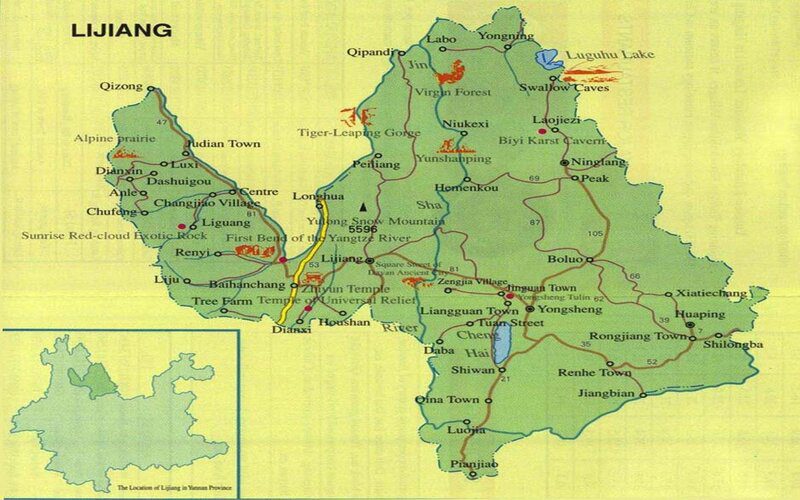
Panoramic view of Lijiang
In this Lijiang travel guide, we’ll provide you with essential information about climate, the best places to visit, activities to do, etc. Follow it to prepare for a perfect trip to China!
Climate and Best Time to Visit Lijiang
Lijiang has a highland subtropical monsoon climate due to its location at a relatively high altitude. The climate is characterized by mild temperatures, abundant sunshine, and distinct seasonal variations.
- Spring (From March to May): During this time, Lijiang is generally mild and pleasant. The temperatures gradually rise during this season, with average daytime temperatures ranging from 15 to 20 degrees Celsius. However, it can still be quite chilly at night and also brings occasional rain showers.
- Summer (From June to August): Lijiang experiences a relatively cool summer compared to many other parts of China. The average daytime temperatures range from 20 to 25 degrees Celsius. While it can get warm during the day, the nights remain cool and refreshing. Summer is also the rainy season in Lijiang, with frequent showers and occasional thunderstorms. The rainfall contributes to the lush greenery and beautiful landscapes of the region.
- Autumn (From September to November): Autumn is considered the best time to visit Lijiang due to its mild and comfortable weather. The temperatures start to cool down, and the average daytime temperatures range from 15 to 20 degrees Celsius. The skies are generally clear, and the scenery is at its most picturesque, with colorful autumn foliage adding to the charm of the region.
- Winter (From December to February): This season in Lijiang is chilly, but not extremely cold. The average daytime temperatures range from 7 to 12 degrees Celsius. Nighttime temperatures can drop below freezing. While snowfall is not very common in Lijiang’s urban areas, the nearby mountains, including Jade Dragon Snow Mountain, are often covered in snow, creating a stunning winter landscape.
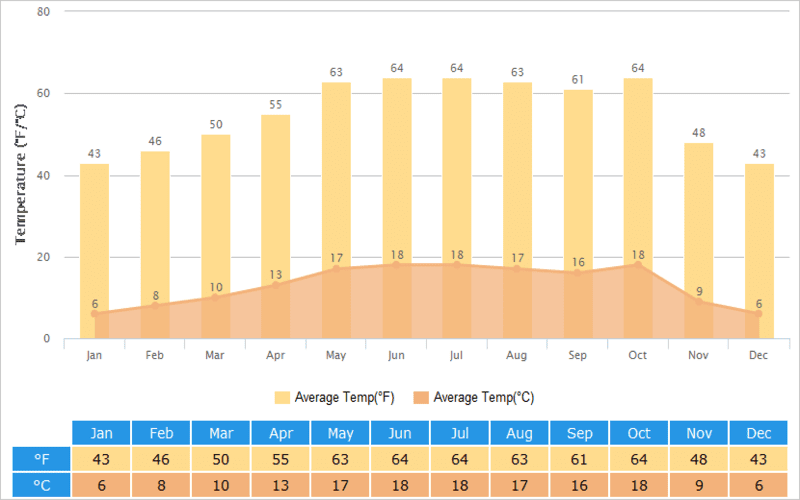
The climate of Lijiang
Due to its geographical position, Lijiang has cooler summers and warmer winters than the North of China. This city receives a higher amount of rainfall in summer and it may rain heavily. Thus, the best times to visit Lijiang are in Spring and Autumn, but if you desire to see the snow-capped Jade Dragon Snow Mountain, don’t forget to come to Lijiang in Winter.
Getting to Lijiang
By plane
The plane is the most convenient mean of transport to get to Lijiang from other countries or regions of China. The nearest airport to Lijiang is Lijiang Sanyi International Airport (LJG). It has direct flights connecting to major cities in China, including Beijing, Shanghai, Guangzhou, Chengdu, and Kunming. Once you arrive at the airport, you can take a taxi or airport shuttle bus to the city center of Lijiang.
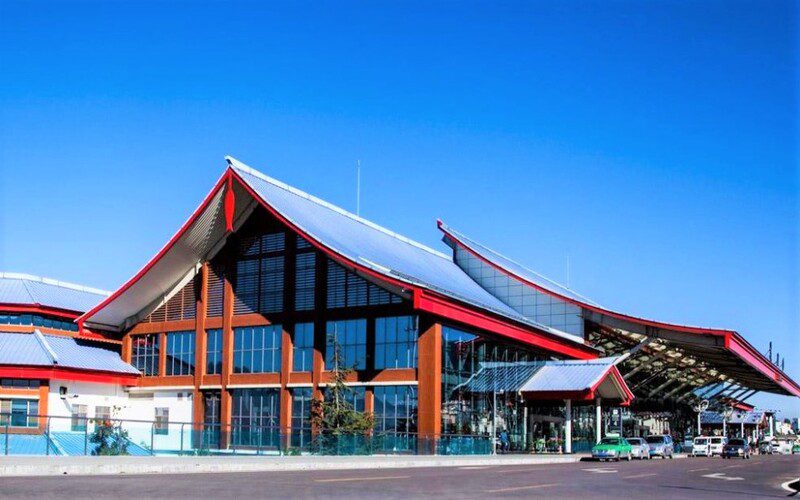
Lijiang Sanyi Airport
By train
The train is also another way to travel to Lijiang, but it is not very popular among tourists. In fact, Lijiang doesn’t have a train station within the city, so you must reach Lijiang by train via the neighboring city of Kunming. From Kunming, you can take a high-speed train or a regular train to Lijiang. The distance from Kunming to Lijiang is also relatively long, it takes approximately 3 to 6 hours to travel by train, depending on the type of train.
By bus
Lijiang is well-connected to nearby cities and towns by bus services. There are long-distance buses available from major cities in Yunnan Province, such as Kunming, Dali, and Shangri-La. The bus journey durations vary depending on the distance, but it can take several hours to reach Lijiang from these cities.
By car
If you prefer a more flexible mode of transportation, you can also consider renting a car or hiring a private driver to travel to Lijiang. The roads leading to Lijiang are generally in good condition, and you can enjoy the scenic drive through the mountains of Yunnan Province. However, it’s important to note that you may require a Chinese driving license or an international driving permit to drive legally in China.
Getting around Lijiang
On foot
The Old Town is the main tourist area in Lijiang, where you can get around on foot. The town is pedestrian-friendly, with narrow streets, stone pathways, and canals. Walking allows you to fully immerse yourself in the charming atmosphere, discover hidden alleys, and explore the local shops, cafes, and attractions at your own pace.
By taxi
Taxis are available in Lijiang and can be easily hailed on the streets or found at designated taxi stands. It’s advisable to have your destination written down in Chinese characters or use a translation app to communicate because most drivers in China can’t speak English. Taxis in Lijiang generally run on a metered fare basis, but it’s always a good idea to confirm the fare or negotiate before starting the ride.
By bus
Lijiang has a network of local buses that connect different parts of the city. Buses are a cost-effective way to travel longer distances or reach specific attractions. Bus routes and schedules are usually displayed in Chinese characters at bus stops, so it may be helpful to have the names of your destinations written in Chinese to ensure you get on the right bus.
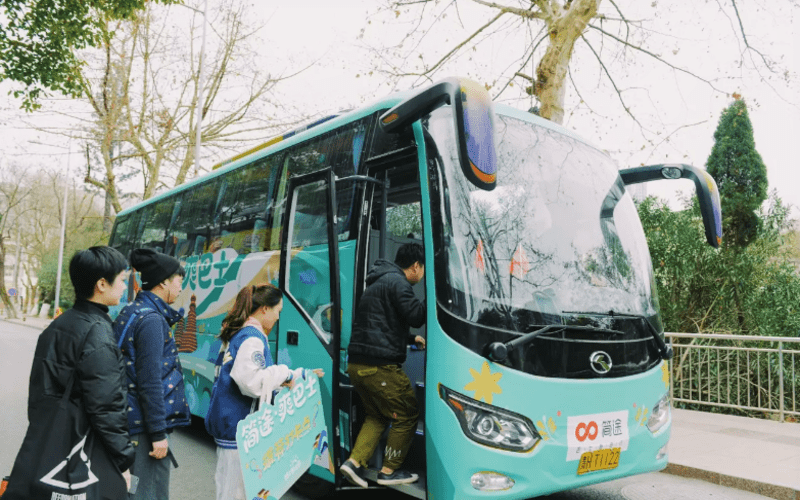
Lijiang Bus
By bicycle
This is an interesting way to explore this city, especially the scenic countryside and nearby attractions. You can rent bicycles from various rental shops in Lijiang or through your accommodation. Riding a bicycle allows you to enjoy the beautiful landscapes at your own pace and gives you the flexibility to stop and explore places of interest along the way.

Bicycle – A popular transport to get around Lijiang
By private car
If you prefer more convenience and flexibility, you can hire a private car for a specific duration or for a full day. This option allows you to customize your itinerary, visit attractions at your own pace, and have the convenience of a dedicated vehicle and driver. Besides, the drivers are usually knowledgeable people about Lijiang, so they are always happy to become your guide to help you know more useful information about the Old Town such as history, culture, people and traditional food, etc. However, you should negotiate the price and terms in advance before hiring a private car.
Accommodation in Lijiang
Lijiang offers a wide range of accommodations to suit different budgets and preferences. Whether you prefer luxury hotels, boutique guesthouses, or budget-friendly options, you’ll find various choices in the city. However, when you choose Lijiang for your tourist destination, you should consider factors such as location (whether you prefer to stay in the Old Town or in other parts of the city), budget, amenities, and the overall atmosphere you’re seeking. It’s recommended to book in advance, especially during peak travel seasons, to secure your preferred choice of accommodation. Here are some hotels to reference:
- InterContinental Lijiang Ancient Town Resort
- LijiangAncient City Kasion Hotel
- Jinmao Hotel Lijiang
- Guanfang Hotel
- Baisuifang Boutique Hotel
- See Above The Clouds Inn
- Qinhuxuan Lake View Garden Inn
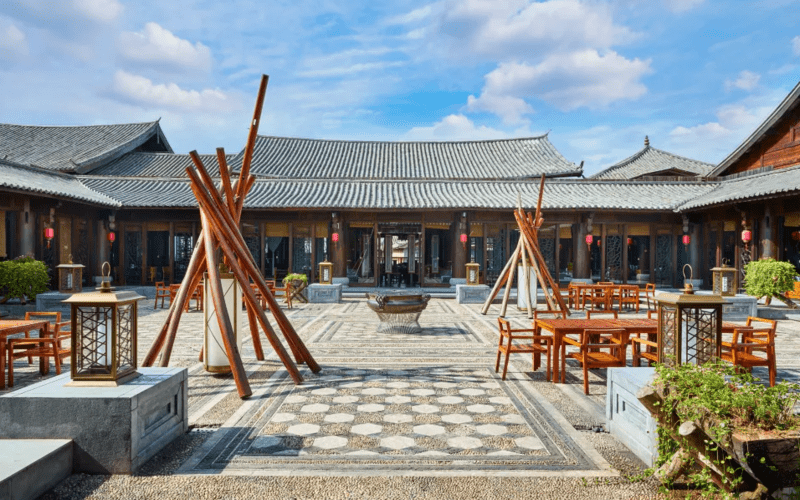
InterContinental Lijiang Ancient Town Resort
Best Places to Visit in Lijiang
Old Town of Lijiang
Lijiang Old Town is the main attraction of this rustic city. The town is located at an elevation of 2400 meters above sea level. It was first built during Song Dynasty (960 – 1279) and became the ancient trading center between Sichuan, Yunnan, and Tibet. It was also the economic, cultural, and communication exchange route between Naxi, Tibetan, Bai, and Han ethnic groups. The religious architecture which is a combination of Confucianism, Taoism, and Buddhism is the highlight of this old town.
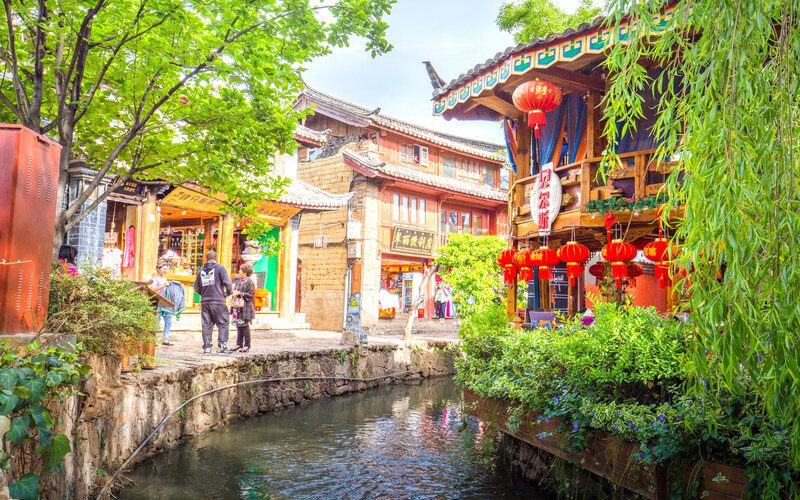
Lijiang Old Town
This town is divided into three parts: Dayan Old Town, Baisha Quarter, and Shuhe Ancient Town. Dayan Old Town is well-known for its unique architecture which combines northern and southern styles. Shuhe Ancient Town is the birthplace of the Naxi ethnic group.
Tiger Leaping Gorge
Located 100 kilometers away from Lijiang Old Town, Tiger Leaping Gorge is a canyon on the Yangtze River, the most famous place for cruising in China. It is one of the deepest gorges in the world with a vertical elevation of 3790 meters. Tiger Leaping Gorge is surrounded by Jade Dragon Snow Mountain to the east and Haba Snow Mountain to the west. This place can be divided into three sections: Upper Gorge, Middle Gorge, and Lower Gorge. It offers breathtaking views of the Jinsha River winding through the steep cliffs. Hiking trails are available for visitors who want to explore the imposing landscapes and discover ethnic life.
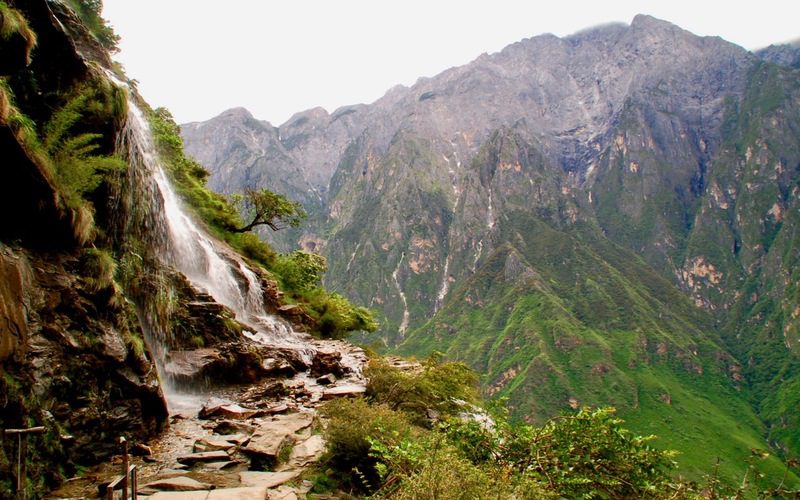
Tiger Leaping Gorge
Jade Dragon Snow Mountain (Yulong Mountain)
Jade Dragon Snow Mountain is a sacred mountain of the Naxi people. Containing 13 peaks, this mountain is 35 kilometers long and covers an area of more than 520 kilometers square. Jade Dragon Snow Mountain is home to about 6,000 species of plants and 30 species of animals, including rare species like the snow leopard and the Yunnan golden monkey. This mountain is a popular destination for winter activities such as hiking, mountaineering, and scenic cable car rides. If you are not into hiking and trekking, you can get a panoramic view from a cable car here. The best time to visit Jade Dragon Snow Mountain is from November to April when the peaks are covered with fog and snow.
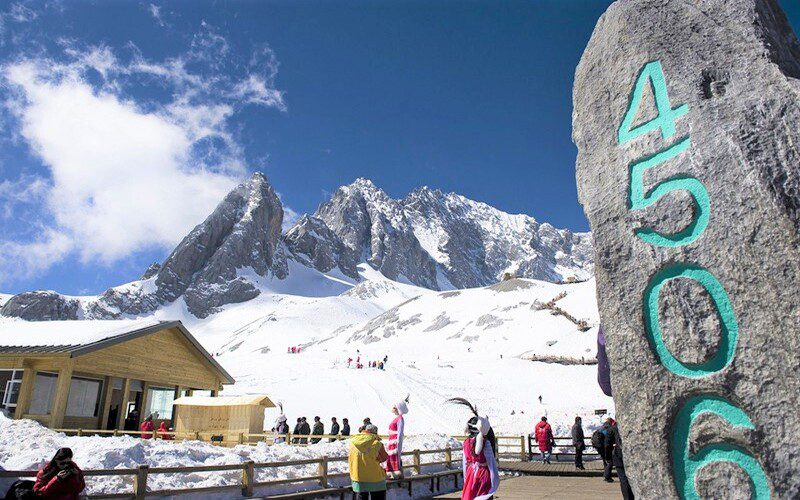
Jade Dragon Snow Mountain
Lugu Lake
About 200 kilometers from the center of Lijiang, Lugu Lake is an alpine lake with romantic scenery. Lugu Lake is atmospheric with green hills, clean water, and rustic stilted houses. The lake is the home to Mosuo society, which is the last matriarchal society in the world. In this lake, there are five islands among which Heiwawu Island, Liwubi Island, and Lige Island are the most frequently visited ones. Taking a boat ride along Lugu Lake is the best way to appreciate its beauty.
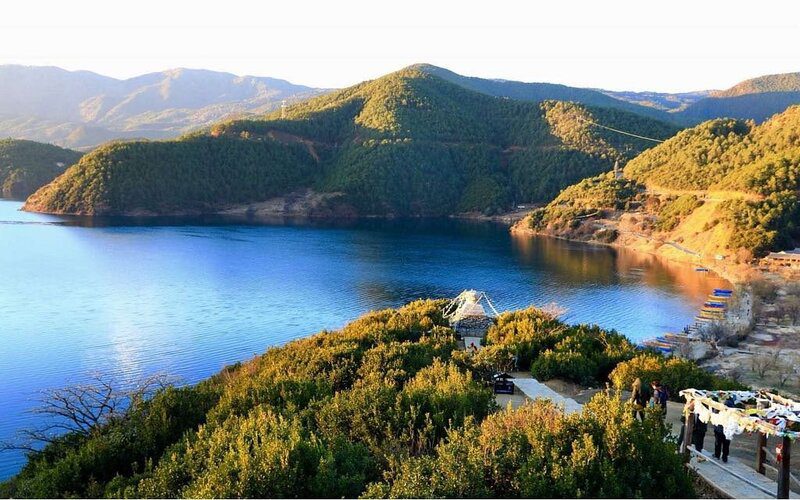
Lugu Lake in Lijiang
Jade Spring Park
Built-in 1737, Jade Spring Park, also known as Heilongtan Park (which means ‘Black Dragon Pool Park’ in English), is famous for its large crystal pool. In summer and autumn, the pool is really romantic with milky flowers on the water. Jade Spring Park is only 1 kilometer from Lijiang Old Town, you can walk there or take a bus.
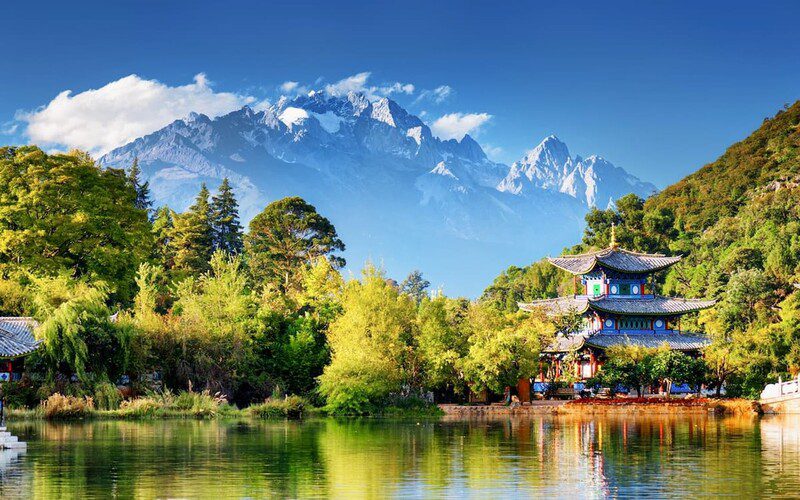
Jade Spring Park
Shuhe Ancient Town
Located a short distance from Lijiang’s Town, Shuhe Ancient Town is another well-preserved historic site. It features traditional architecture, narrow streets, and ancient canals. Shuhe offers a quieter and less crowded alternative to the bustling streets of Lijiang’s Old Town.
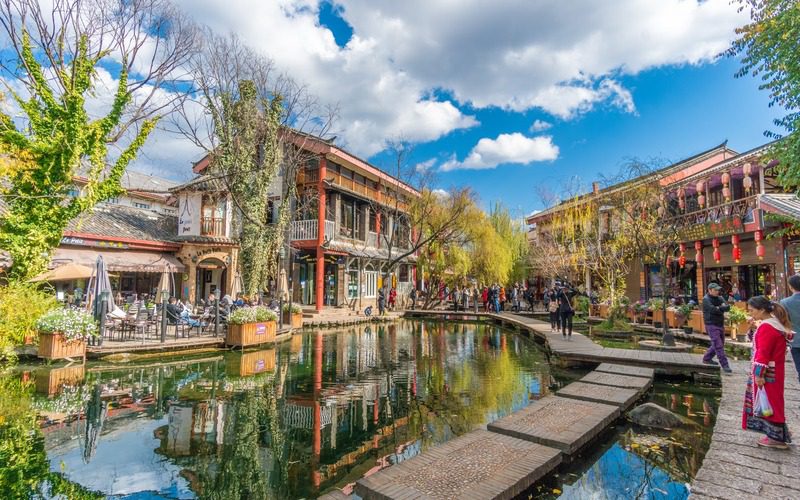
Shuhe Ancient Town
Must-Try Activities in Lijiang
Explore the daily life of Naxi Ethnic Minority
Lijiang is predominantly inhabited by the Naxi ethnic minority, who have a unique culture and history. The Naxi people have their own Dongba script, which is one of the few remaining pictographic scripts in the world. Visitors to Lijiang can learn about the Naxi culture through various cultural shows, museums, and interactions with the friendly local community like attending a Naxi music performance, learning about the Dongba culture at the Dongba Culture Museum, or simply participating in a Naxi traditional tea ceremony.
Enjoy Impression Lijiang Show
Impression Lijiang, exactly what the name suggests, is a superb outdoor art performance with the imposing Jade Dragon Snow Mountain as the backdrop. The performance includes singing, dancing, playing musical instruments, and horse riding, which represents the daily life of the Naxi people. The show times are 9 am, 11 am, 2 pm during the peak season and 11 am, 2 pm during the low season.
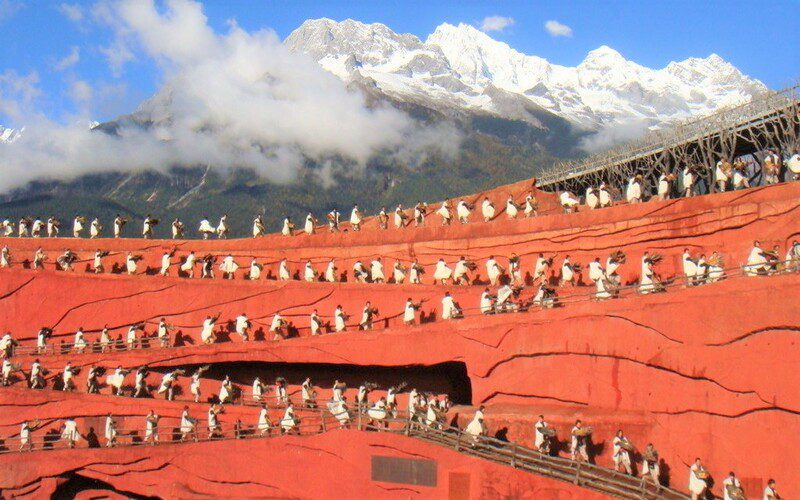
Enjoy Impression Lijiang Show
Admire Lijiang Murals
Lijiang is famous for its intricate and colorful murals, which can be found in various temples and cultural sites around the city. These murals depict scenes from Naxi folklore, mythology, and daily life, offering insights into the region’s history and culture.
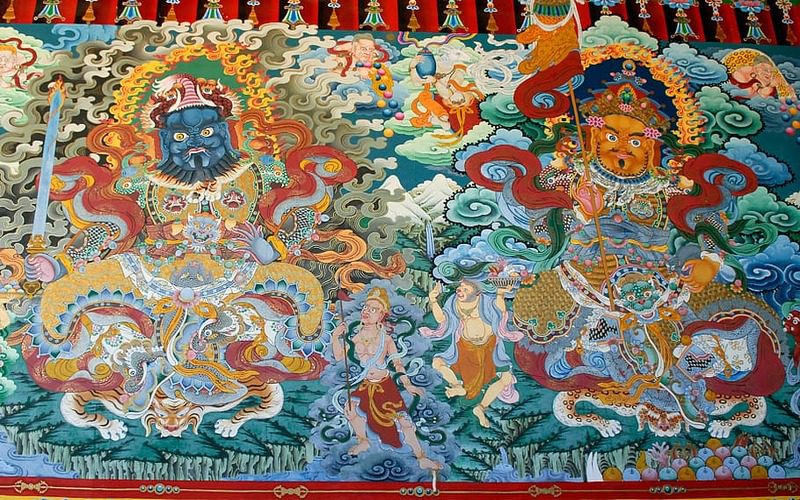
Lijiang Monastery Mural
What to Eat in Lijiang
Lijiang food is the perfect fusion of Han culture and Tibetan cuisine. With abundant sources of agricultural products, the Naxi people in Lijiang have developed their own local cuisine. Sanwen Fish, Chickpeas Bean Jelly, Lijiang Stuffed Bun, and Naxi Hot Pot are must-try dishes on your Lijiang trip.
Naxi Hotpot
Hotpot is the favorite dish of local people in winter. It is spicy and spicy yet highly nutritious. Naxi hot pot is rich in calories, protein, and vitamins which will keep you warm all day long. You can have a variety of options for meat in this dish: mutton, goat meat, pork, or beef. Moreover, a lot of fresh green vegetables, mushrooms, potatoes, tomatoes, carrots, and tofu are featured in the hot pot. Besides, ginger is a must-have ingredient.
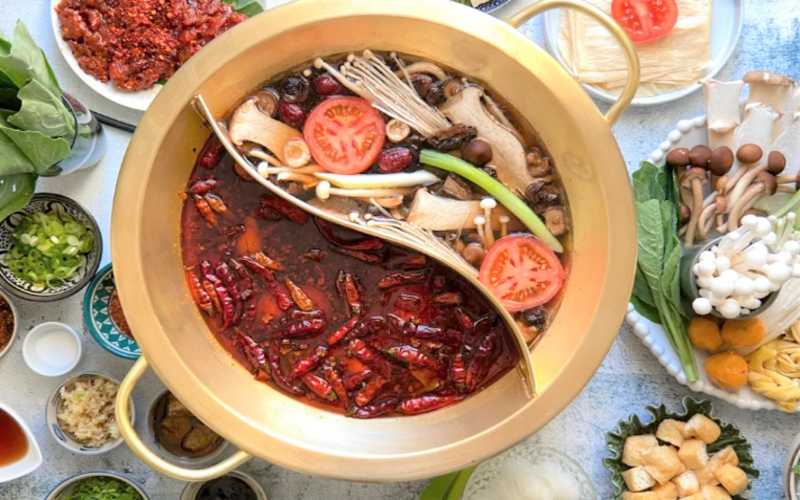
Naxi Hotpot
Black Goat Hot Pot and Salted Pork Ribs Hot Pot are the two most popular hot pot dishes in Lijiang. Black Goat Hot Pot used local black goats which are raised in the mountains, thus the meat is lean, juicy, and contains less fat. The broth of this food features many kinds of herbs and spices, which will feast on your taste buds.
Sanwen fish
Raised in the glacial meltwater from snow-capped mountain ranges, Sanwen fish is the local specialty of Yunnan. The fish is cooked with three different flavors, hence the name “Sanwen,” which translates to “three flavors” in English. The three flavors are usually spicy, sour, and sweet. The contrasting flavors of spicy, sour, and sweet create a harmonious balance in the dish, making it a popular choice among locals and visitors alike. It is usually served with steamed rice or other side dishes.
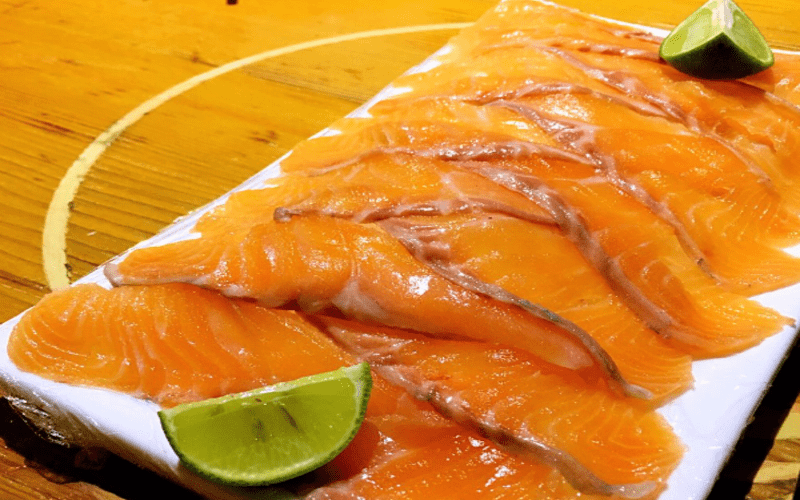
Sanwen fish
Lijiang Stuffed Bun (Ba Ba)
Lijiang Stuffed Bun is a famous local traditional snack. There are two kinds of Stuffed Bun: the salty and sweet bun. This food has an appealing golden color, crispy taste, and fragrant smell. It is a perfect gift for your friends and relatives as Lijiang Stuffed Bun can be preserved for a long time. You just have to steam or fry it slightly when returning home. This food is widely available in local stores around Lijiang.
Local wheat is the main ingredient in this food. The wheat flour is mixed with water, added some plant oil, and rolled into cylinder-shaped pieces. Sesame, walnut kernel, and other seasonings are added, and then the buns are baked to create a golden-yellow color.

Lijiang Stuffed Bun (Ba Ba)
Chickpeas Bean Jelly (Ji Dou Liang Fen)
Chickpea is the local special kind of soybean. It looks like the eyes of the chicken, hence the name. Chickpeas are ground into powder, boiled until it turns white, and then poured into different containers. Chickpeas Bean Jelly is served either hot or cold. It can be mixed with mustard, red pepper, vinegar, green onions, and other seasonings to create a cold dish. If you prefer something hot, the fried jelly will satisfy you.
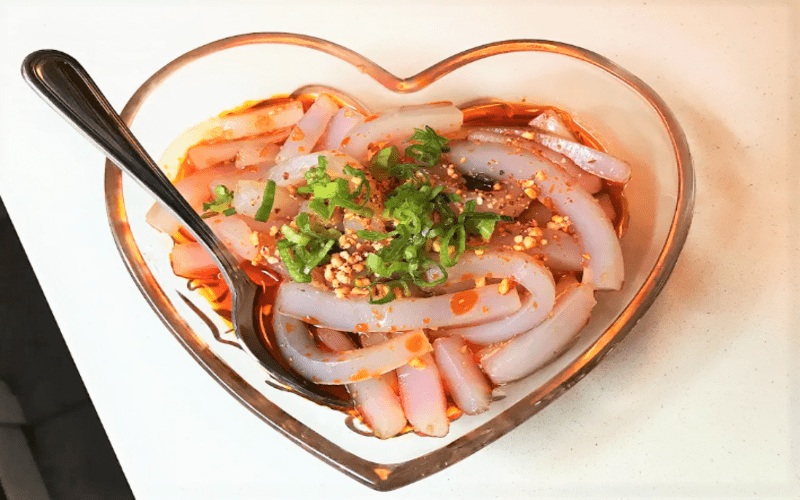
Chickpeas Bean Jelly (Ji Dou Liang Fen)
Lijiang attracts visitors from around the world who are drawn to its unique blend of cultural heritage, natural beauty, and charming old-town atmosphere. It offers a memorable experience for those seeking to immerse themselves in traditional Chinese culture and explore the stunning landscapes of Yunnan Province. If you are planning a trip to Lijiang, don’t hesitate to contact us for more details.
